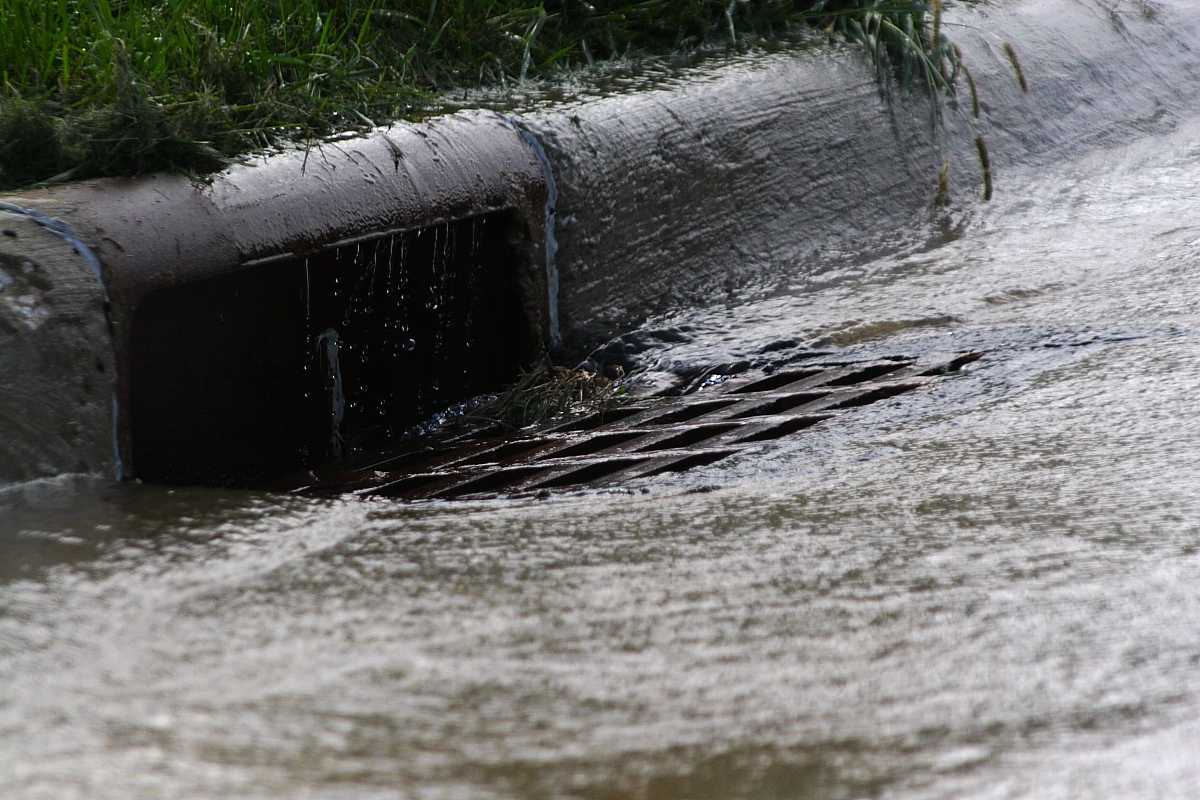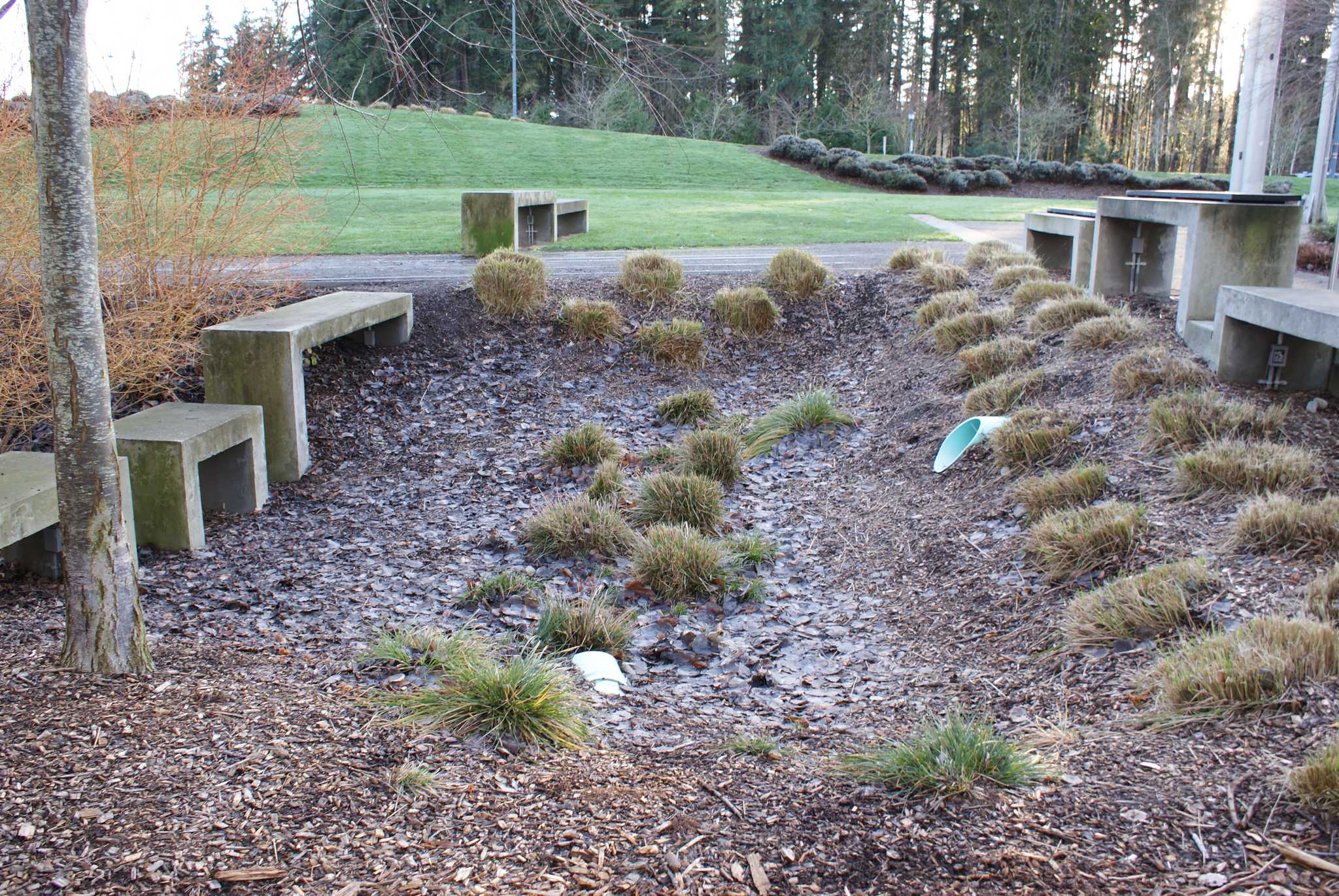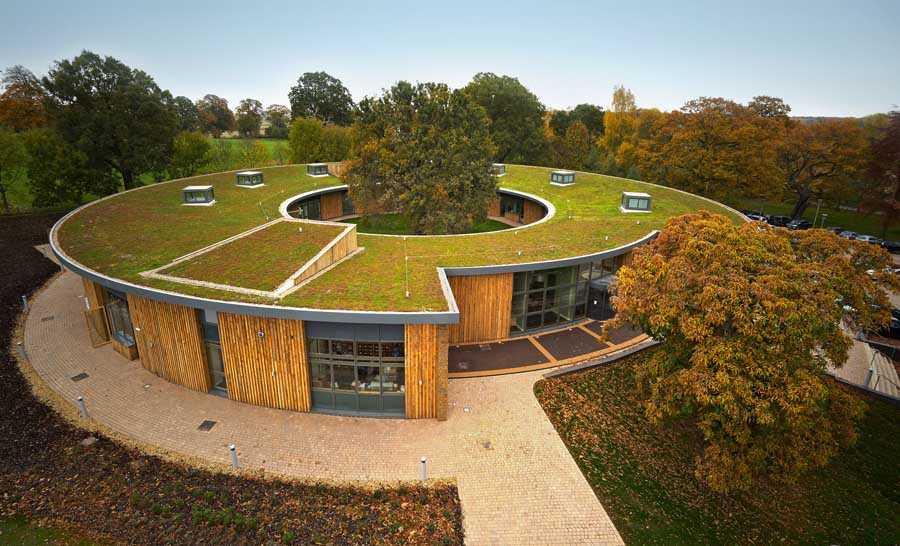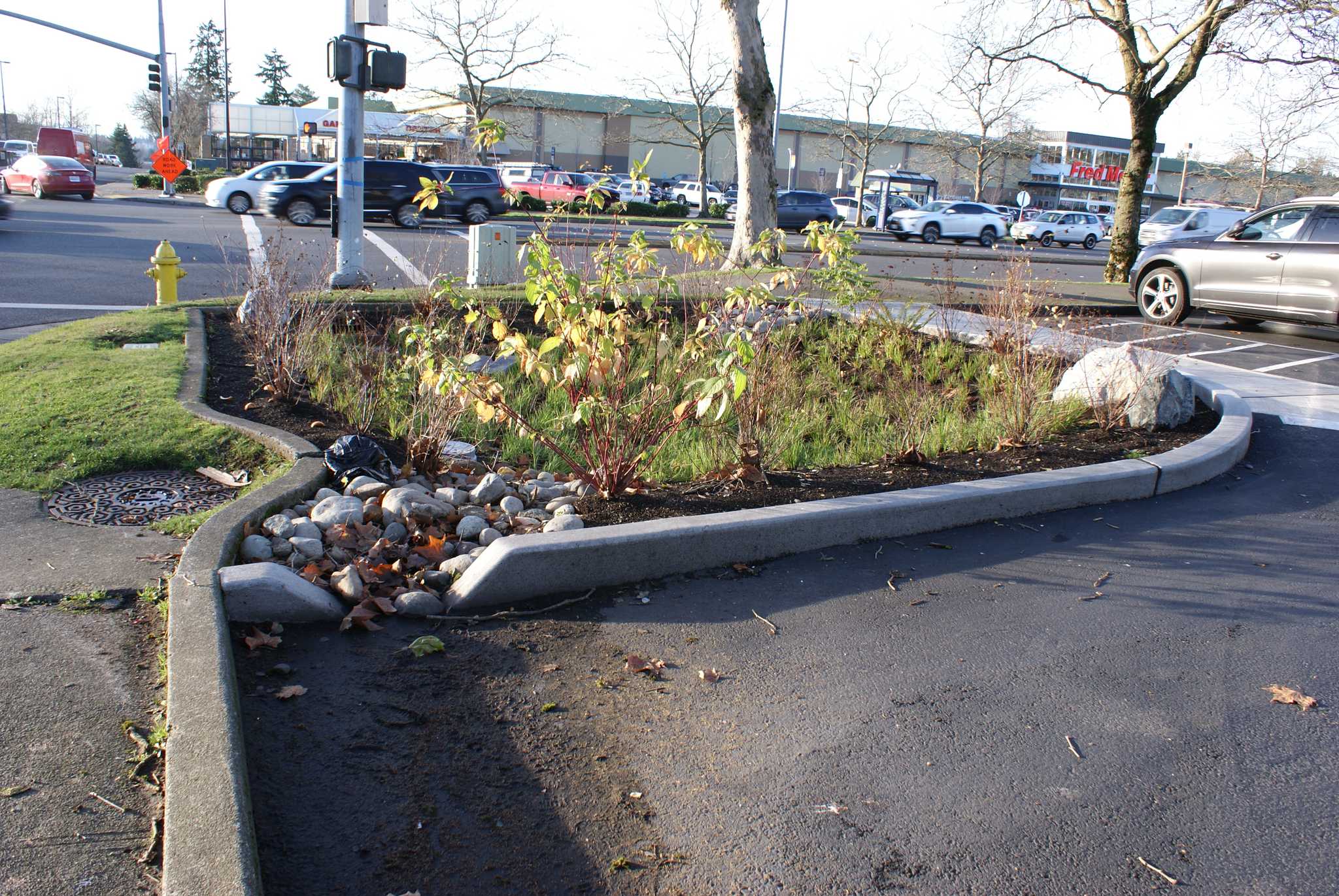Washington State Stormwater Sustainable Management
The essay below was developed as part of a Introduction to Sustainable Natural Resources course through Oregon State University.
Washington State Stormwater Sustainable Management
Water is essential for life on the planet. Keeping the worlds water sources clean and sustainable is key to a continued existence of all biological life. This importance for clean water makes stormwater a valuable natural resource. Urban watersheds are currently experiencing problems with pollution, flooding, and erosion that effect the local communities and wildlife populations. Proper management of stormwater is crucial in creating and keeping urban watersheds sustainable for the current and future generations. This paper will discuss the environmental problems with current management, the social implications of management, the financial considerations involved, and potential solutions for sustainable stormwater management.
Stormwater is critical to the natural water cycle and the ecosystem. To understand why stormwater must be sustainably managed it is important to understand exactly what stormwater is. Stormwater is water that precipitates on to the surface of the earth during storm events. This precipitation can be in the form of rain, snow, or hail. After the precipitation falls to the ground, the water then infiltrates through the soil into the ground water or it will run off into waterways. In urban settings much of this storm water must be managed as the natural infiltration processes have been impeded by development. Managing storm water is necessary to water quality of the world. Washington is known for its frequent precipitation events and abundant bodies of water. Washington has also been experiencing a constant increase in urban development in the last century. This development has led to larger amounts of buildings, roofs, roads, and other impervious surfaces. These surfaces change the natural water cycles as less water can infiltrate into the ground which then results in more storm water runoff. With more runoff there is more risks for pollution, erosion, sedimentation, and flooding (Greenville County Soil and Water Conservation District). With sudden discharges of water and pollutants poses extreme risks to survival of fish and wildlife (Burton and Pitt. 2002). These storm surges bring many pollutant and sediments into the waterways creating dangerous and even deadly conditions for fish and wildlife.
Urbanization has drastically altered watersheds and hydrology of Washington State. Historically storm water management has consisted of channeling and diverting storm water to local water ways. These methods were often concealed in underground pipe networks keeping the systems out of sight. This would lead to fast flushes of water that was often littered with pollutants straight too waterways to the detriment of the ecosystem. Another method was to trap storm water in concrete basins. Many of these processes were in place to prevent local flooding and did not work to address problems such as pollution and habitat impacts. Since 1972, local governments have been required to manage storm water in ways to reduce non-point source pollution due to the Clean water Act and National Pollutant Discharge Elimination System (Echols and Pennypacker 2008). This measure helped put pressure on finding better technologies to reduce pollution from water runoff.
Traditional storm water management has involved underground piping and catchment. These processes worked to remove the natural element from stormwater to allow people to have more control of the water. Much of excess stormwater that flows off roads, roofs and other impervious surfaces end up in pipes that transport the water underground. The underground pipes take the water to local waterways. This process typically has no filtration, allowing any pollutant that was picked up in the travel to be deposited into the waterways. The water is contained in the pipes underground which also prevent the water from filtering into the soil. Without natural water filtration through soil, local water tables are unable to recharge. Catchment basins or water detention ponds work to store excess stormwater before releasing it into the environment. Historic catchment basins and detention ponds have now been adapted to be more sustainable. Stormwater detention ponds have been used to increase water quality and help store excess storm water after a storm event. Two water detention ponds in Bellevue Washington were studied by Comings et al. (2000) to analyze their ability to remove pollutants. Both ponds worked to remove pollutants and other solids from the storm water. Due to design differences one pond routinely performed better. Catchment systems and diversions have improved with stricter regulations to help limit pollution, but more work is needed. While many of the current improvements to basins and catchments have reduced issues with flooding and pollutants, there is still problems with current systems not allowing for adequate recharging of ground waters (Roopika. 2016). Recharging of ground water is important for storing water for recharging lakes and rivers, irrigation, drinking water and much more. New sustainable green technologies have started to address the issues surrounding surface water management, but widespread use is still minimal.
New green stormwater management technologies are constantly being developed. One such natural technology that is currently used is soil filtration. Soil filtration is the process of water passing through soil which allows for pollutants to be filtered out naturally by physical, chemical and biological processes (Day 2015). Spromberg et al., (2015) found that water from highway run off can cause spawner mortality syndrome which can kill adult Coho salmon. This study also demonstrated that waters that are pretreated by soil infiltration can prevent the spawner mortality syndrome. By allowing stormwater to pass naturally through soil before entering waterways pollutants can be filtered out and minimized reducing the pollutants that salmon are exposed to. This shows that conventional green storm water collection does work to filter out many toxic pollutants from common stormwater. Further development and implementation of these green soil filtration systems are critical to continue improving the water quality of stormwater before it inters the watershed.
Another technology is green roofs. A green roof is a roof that is covered in living vegetation. This technology has been shown to reduce stormwater runoff and improve water quality of water that storm water running off the living roof (Morgan et al., 2013). Pervious concrete is also used in urban settings with success. These concretes allow for storm water to pass through the concrete and reinter the water table. This prevents the excess collection of storm water that offers on other traditional impervious surfaces. Some pervious concretes can have the additional effect of decomposing natural and inorganic compounds.
Stormwater management a is important due to the wide impacts it has on everyone in the state even at a more social perspective. It can affect people through flooding and water quality. Community flooding risks can occur when storm water is not managed carefully. With flooding comes risks to lives and property. Water quality also plays a large role in the societal impacts of stormwater management. Improper management of stormwater runoff can potentially contaminate groundwater sources that are vital to drinking water supplies for many communities (EPA 2003). Contaminants from animal waste, septic tanks, and other agricultural waste sources can lead to fecal coliform bacteria found in local water ways. These bacteria can have a devastating impact on the Pacific Northwest ecosystem. This pollutant can shut down shellfish harvests as often seen on Washington and close down areas for other recreation activities (King County 2016). The problem of stormwater management can be a complex puzzle type of problem. There is a consensus with stakeholders that stormwater management must be managed and controlled. The problem come down to the science of how to control the water. There are many ideas of how stormwater management could be managed. Many of the current ideas for are either not a solution by themselves or need more testing and research to understand the long-term potential impacts management decisions can have on the people and the ecosystem.
Because stormwater is a part of everyone’s lives, it can make managing it difficult. Stakeholders for stormwater management include federal government, local governments, public, commercial industry, agricultural industry, recreationists, and ecologist. Each of these different stakeholders have different values and needs when it comes to the management of storm water. Federal and local governments values fall into protecting the social impacts of management. Recreationists and ecologists value the ecological impacts. Commercial and agricultural industry value the financial impacts. This leaves the general public falling in between all the values. These different stake holders also have different inequalities that they face. Commercial and agricultural industry have more sway in policy due to the financial backing and drive for profit. The public have the most risk stormwater management, but also have the least influence. This inequality needs to be addresses between industry and public.
Stormwater management requires steady funding. This funding can be an issue and is often central to the stormwater management issue. To implement cutting edge technology current infrastructure must be updated and this requires capital. Much of the current funding sources comes from fee-based utility model that raises money for stormwater management bases off impervious surfaces of a building (Grigg 2013). This funding source is what allows for management of storm water within each local government. Sustainability is a large factor in management of stormwater. Sustainable stormwater management is necessary for protecting the communities and the ecosystem.
The pacific northwest in vulnerable to more storm water events with climate change. Climate for the pacific northwest is expected be warmer with higher winter precipitation events in the winter months (Mote et al 2008). With higher precipitation more severe stormwater events are likely. These events will have more runoff and potential for flooding. These increased storm events leave communities at risk. Resilience is a factor in stormwater management for communities to quickly recover from storm events. With capable stormwater management, communities can handle stormwater events with minimal impact to social, economic and environmental aspects. The pacific northwest is already taking steps to be more resilient to these events and working to improve stormwater management. Stormwater management impacts the lives of everyone in the Pacific Northwest. This heavily used natural resource must be maintained and managed in a way that considered the environmental social and financial factors. Better understanding these influences can lead to storm water being managed most sustainable way for Washington communities.
Communities can often be resistant to making changes when it comes to stormwater management for many reasons. One reason is the belief that newer stormwater processes are too complex of a process. The processes are either too expense, take too much time, or have potential participants are lacking information of how the project works (Beery 2018). Finding ways to mitigate cost, time and lack of knowledge is key encouraging the adoption of better management practices. Effective communication for stormwater management must be done in a combination of ways. The audience can be educated and made aware of the problems and potential solutions. The audience then needs to have some sort of financial incentive or other understanding of personal benefit. With this combination of education and encouragement people are more likely to adopt change needed to improve stormwater management (Brown et al., 2014). It is important to also reach out to a wide audience including underserved communities to improve widespread adoption of best management practices of stormwater management.
Clean water is an important economic commodity for a variety of industries. Agriculture and fishing all rely on a clean source of water for sustaining irrigation and healthy fish populations. When water becomes polluted or groundwater sources depleted, these industries can suffer. Sustainable stormwater management helps to insure clean water in the environment. Local municipalities drinking water are also very dependent on management of stormwater for insuring clean drinking water. Improper management of stormwater runoff can potentially contaminate groundwater sources that are vital to drinking water supplies for many communities (EPA 2003). Ensuring continued access to clean water is key to keeping a sustained environment and economy.
Economics is a key component in how stormwater is currently managed. Improper management can lead to more flooding in communities. This increased flooding then results in economic losses to residents and cities. Federal Emergency Management Agency (FEMA) has estimated that flooding causes approximately $1 billion in annual damages and 25 percent of this cost can be linked to stormwater (Odefey et al., 2012). Stormwater pollutions can also have direct economic impacts on industries such as fishing and agricultural productivity. It also has nonmarket impacts in the areas of recreation and ecosystem resilience. All these direct and indirect impacts rely on healthy waterways to maintain a positive economic profit. An example of indirect impacts of improper stormwater management is with beach recreation after storm events. Stormwater events can lead to sewer overflow that lead to contamination to stormwater and then later the environment. The EPA estimate 5,576 illnesses are linked to sewer overflows to recreationists at beaches during stormwater events each year (Odefey et al., 2012). This demonstrates a small fraction of the medical costs that can occur from improper stormwater management. The non-market impacts can often be overlooked but are often important costs to natural resource management.
Everyone has a stake in having clean water, but local governments are the chief managers of stormwater practices. Stormwater management involves externality problems. Local governments and taxpayers are responsible for the cost of managing surface water, but those out of the municipality experience the positive effects for good management and negative effects of poor management. With improper management, effects of pollutants and flooding result in more costs and unhappy residents. This creates a great deal of incentives for the management stormwater. Stormwater management can be expensive to properly maintains and implement using newer green infrastructure, the costs of improper maintenance of stormwater can be even higher. This leads to the potential for benefit cost analysis to identify cases where the benefits exceed the cost. Case studies from Beijing (Liu et al., 2016) analyzed 4 different green infrastructure scenarios for stormwater management and found even with the higher costs for construction and maintenance the calculated benefit was greater. The authors recommended the adoption of green infrastructure for stormwater management. This study demonstrates the need for local municipalities to invest in green infrastructure for stormwater management. Investing in green infrastructure can help communities live more sustainable and stimulate local industries while limiting the dangers of stormwater events on residents.
Stormwater can be a difficult concept to place a value on using traditional economic methods, as clean water is not a commodity that can be traded in market setting. Heal (2012) looks at the natural environment as “natural capital”. When discussing natural capital, Neal states “we depend on it in many ways, and there are services it provides that are likely irreplaceable”. This concept applies well to stormwater management. Stormwater management is invaluable and essential to continued ecosystem services. Stormwater and clean water are an environmental good that provides services to all life on the planet. Stormwater can be considered to have a market value and non-market value. While a price is difficult to directly place, fresh water is highly important and vital to most industries. Fresh water can help industry keep production costs down showing a market value on fresh water as a resource. On the other hand, health effects on humans and wildlife have a non-market value. One method to determine the price for a non-market valuation resource is to determine the willingness to pay (WTP). One study of households in Melbourne and Sydney Australia showed households WTP of A$799 per household for green stormwater management (Brent et al., 2017). Participants in the study had higher WTP only if maximum levels of environmental services were achieved i.e. reduced flooding, stream health, and reduction in water restrictions. This shows that participants held high value on ecosystem services in the region. If these environmental services were not improved than participants had much lower WTP. Managing stormwater involves a large amount of economic decisions to be made. By better understanding the complex economics involved in sustainable stormwater management, decisions to implementing best management options for sustainable stormwater management in Washington can be successful.
Many stormwater pollution problems occur on private properties meaning that public outreach and education is crucial step in minimizing stormwater pollution. Controlling this pollution at the sources is a preventive way to ensure cleaner storm water runoff. Many methods have been used to communicate the problems of stormwater management through public outreach opportunities. Education is the first step in communication. Education is essential in providing the public the knowledge to make decisions and evaluate how important management of stormwater is in everyday life. Education is essential in spreading awareness of the pollution problems that often originating from private property (Brown et al., 2014). Programs that inform private homeowners on projects to manage stormwater on the personal benefits tend to be better received. In Minnesota, homeowners were asked what motivations would cause them to take measures to manage stormwater in the future (figure 1). Most of these reasons for desire to implement water management projects involved some form of personal gain for the participant (Beery., 2018).
Traditional stormwater management as it stands is not enough to maintain freshwater resources in a way that ensures high quality for future generations to come. Further adoption of green stormwater management practices and technologies, such as soil filtration, pervious concrete, and green roofs need to be implemented in combination with current commonly used sustainable methods. The new infrastructure is only one step in addressing the problem with stormwater infrastructure. The new technologies need to be combined with better community education and outreach to educate the public and industries on how to minimize pollutants from entering the environment to begin with. All these parts are needed to address the many issues of surface water management. Continuing with current regulations and practices is unsustainable, especially with continued urbanization and future influencing effects that climate change will have.

Sustainably managing our stormwater is critical to the health of our water ways and communities. By discussing the environmental problems with current management, the social implications of management, the financial considerations, and potential solutions for sustainable stormwater management Washington is better able to develop sustainable stormwater management plans. This heavily used and important natural resource must be maintained and managed in a way that considered the environmental, social, and financial factors. By analyzing all the known factors stormwater can be managed using the best possible technologies and management practices that can provide Washington State with sustainable stormwater management.
References
“Protecting Water Quality from Urban Runoff. 2003,” Washington, DC: U.S. Environmental Protection Agency.
“The Science of Stormwater.” The science of stormwater - King County. King County, (2016). https://www.kingcounty.gov/services/environment/water-and-land/stormwater/introduction/science.aspx.
Brent, Daniel A., Lata Gangadharan, Allison Lassiter, Anke Leroux, and Paul A. Raschky. 2017. "Valuing Environmental Services Provided by Local Stormwater Management." Water Resources Research 53, no. 6: 4907-921.
Brown, Helen L, Darren G Bos, Christopher J Walsh, Tim D Fletcher, and Sharyn Rossrakesh. 2016. "More than Money: How Multiple Factors Influence Householder Participation in At-source Stormwater Management." Journal of Environmental Planning and Management 59, no. 1: 79-97.
Burton, G. Allen, and Robert E. Pitt. 2002 Stormwater Effects Handbook: A Toolbox for Watershed Managers, Scientists and Engineers. Lewis Publishers, CRC Press.
Day, Monica. 2015. “Want Clean Water? Filter with Soil.” MSU Extension, https://www.canr.msu.edu/news/want_clean_water_filter_with_soil
Echols Stuart, and Eliza Pennypacker. 2008. "From Stormwater Management to Artful Rainwater Design." Landscape Journal 27, no. 2 (2008): 268-90.
G. Allen Burton, Jr. & Robert E. Pitt. 2001. “Stormwater Effects Handbook: A Toolbox for Watershed Managers, Scientists, and Engineers” 17.
Greenville County Soil and Water Conservation District. n.d. “What Is Stormwater?” Greenville County Soil and Water Conservation District, Accessed October 13, 2019. https://www.greenvillesoilandwater.com/what-is-stormwater/.
Grigg, Neil S. 2013. "Stormwater Programs: Organization, Finance, and Prospects." Public Works Management & Policy 18, no. 1: 5-22. Heal, G. 2012. “Reflections—defining and measuring sustainability. Review of Environmental Economics and Policy, 6(1): 147-163.
Liu, W., Chen, W., Feng, Q. et al. 2016. Environmental Management, 58: 1015. https://doi.org/10.1007/s00267-016-0765-4
Morgan, Susan, Serdar Celik, and William Retzlaff. 2012. "Green Roof Storm-Water Runoff Quantity and Quality." Journal of Environmental Engineering 139, no. 4 (2012): 471-78.
Mote, P.W., Salathé, E.P., Duliere, V., Jump, E. Scenarios of Future Climate Change for the Pacific Northwest. 2008. Report prepared by the Climate Impacts Group, Center for Science in the Earth System, Joint Institute for the Study of the Atmosphere and Oceans, University of Washington, Seattle.
Odefey, Jeffrey, et al. 2012. Banking on Green: A Look at How Green Infrastructure Can Save Municipalities Money and Provide Economic Benefits to Community-Wide. American Rivers, pp. 1–44,
Spromberg, Julann A., David H. Baldwin, Steven E. Damm, Jenifer K. McIntyre, Michael Huff, Catherine A. Sloan, Bernadita F. Anulacion, Jay W. Davis, and Nathaniel L. Scholz. 2016. "Coho Salmon Spawner Mortality in Western US Urban Watersheds: Bioinfiltration Prevents Lethal Storm Water Impacts." Journal of Applied Ecology 53, no. 2:398-407.
Subramanian, Roopika. 2016. "Rained Out: Problems and Solutions for Managing Urban Stormwater Runoff." Ecology Law Quarterly 43, no. 2 (2016): 421-48.
Thomas Beery. 2018. "Engaging the Private Homeowner: Linking Climate Change and Green Stormwater Infrastructure." Sustainability 10, no. 12: 4791.






